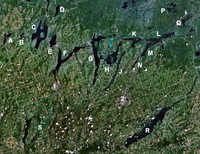
Photo from wikipedia
Fugitive dust has the ability to cause a nuisance and pollute the ambient environment, particularly from human activities including construction and industrial sites and mining operations. As such, dustfall monitoring… Click to show full abstract
Fugitive dust has the ability to cause a nuisance and pollute the ambient environment, particularly from human activities including construction and industrial sites and mining operations. As such, dustfall monitoring has occurred for many decades in South Africa; little has been published on the repeatability, uncertainty, accuracy and precision of dustfall monitoring. Repeatability assesses the consistency associated with the results of a particular measurement under the same conditions; the consistency of the laboratory is assessed to determine the uncertainty associated with dustfall monitoring conducted by the laboratory. The aim of this study was to improve the understanding of the uncertainty in dustfall monitoring; thereby improving the confidence in dustfall monitoring. Uncertainty of dustfall monitoring was assessed through a 12-month study of 12 sites that were located on the boundary of the study area. Each site contained a directional dustfall sampler, which was modified by removing the rotating lid, with four buckets (A, B, C and D) installed. Having four buckets on one stand allows for each bucket to be exposed to the same conditions, for the same period of time; therefore, should have equal amounts of dust deposited in these buckets. The difference in the weight (mg) of the dust recorded from each bucket at each respective site was determined using the American Society for Testing and Materials method D1739 (ASTM D1739). The variability of the dust would provide the confidence level of dustfall monitoring when reporting to clients.
Journal Title: Clean Air Journal
Year Published: 2017
Link to full text (if available)
Share on Social Media: Sign Up to like & get
recommendations!